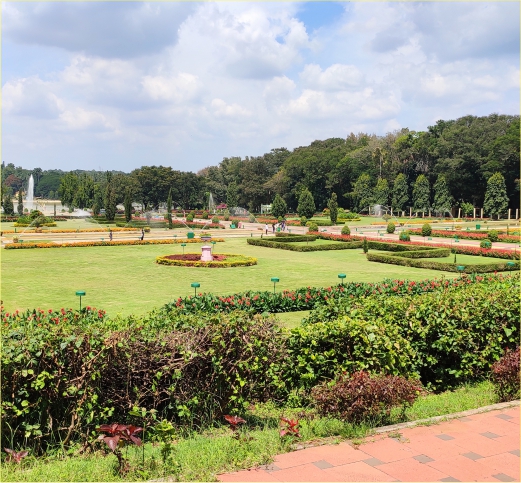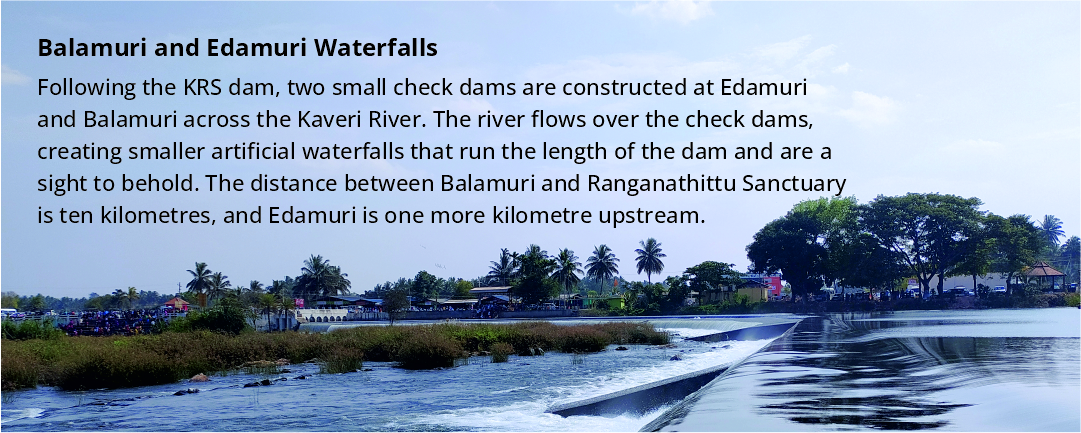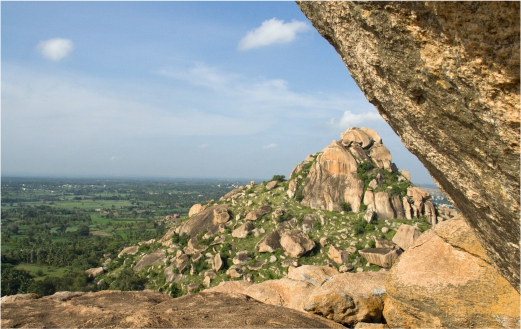Ranganathittu, Karnataka
Been there recently?
The Ranganathittu Bird Sanctuary in the Mandya District of Karnataka is a paradise for bird watchers and nature lovers, housing several species of birds. It is the ideal location to go boating on the river, capture the fascinating view of the various species of birds, and catch a glimpse of the marsh crocodiles in the waters due to the picturesque views of the landscape combined with the colourful array of birds. The sanctuary is a treat for wildlife enthusiasts, housing both exotic and endemic birds as well as crocodiles. There are many different types of birds that you can see in this area, including darter, peafowl, pond heron, wild duck, large cormorant, heron, great stone plover, kingfisher, cattle egret, lesser whistling teal, Indian cliff swallow, great stone plover, river tern, and streak-throated swallow. The common mongoose, flying fox, palm civet, common otter, bonnet macaque, and marsh crocodile are among the mammals and reptiles that can be found here. Boat excursions in the early morning are the best way to discover the sanctuary. The sanctuary, which is located on the outskirts of the city, spans a 40-acre area and consists of six tiny islands. With bamboo trees lining the area, it is located in a picturesque setting and is a haven for bird watchers. It is the outcome of the efforts of eminent ornithologist Dr. Salim Ali, who convinced the then-king of Mysore to establish a bird sanctuary.
Nearby Places to See
Tipu Sultan’s Summer Palace
The summer residence of Tipu Sultan was constructed in 1784 AD and is also referred to as Dariya Daulat Bagh (Garden of the Sea of Wealth). The palace is situated on the banks of the River Cauvery, just outside Tipu’s Fort. It is based on Indo-Islamic architectural style and is primarily made of teakwood. On either side of the plinth are wooden pillars. In two of the palace’s wings, pillars hold up the roofs of the recessed bays. The audience hall is divided into four rooms at each corner by four simple staircases that are built next to the partition walls. The eastern and western corridors are connected by a central hall. However, the palace is notable for having Mysore-style frescoes covering nearly every square inch of its interior.
The summer residence of Tipu Sultan was constructed in 1784 AD and is also referred to as Dariya Daulat Bagh (Garden of the Sea of Wealth). The palace is situated on the banks of the River Cauvery, just outside Tipu’s Fort. It is based on Indo-Islamic architectural style and is primarily made of teakwood. On either side of the plinth are wooden pillars. In two of the palace’s wings, pillars hold up the roofs of the recessed bays. The audience hall is divided into four rooms at each corner by four simple staircases that are built next to the partition walls. The eastern and western corridors are connected by a central hall. However, the palace is notable for having Mysore-style frescoes covering nearly every square inch of its interior.


Brindavan Gardens
The Brindavan Gardens, which are close to the Krishnaraja Sagar Dam, were modelled after the renowned Shalimar Gardens in Kashmir, which are well-known for their Mughal design aesthetic. The terraced gardens are well laid out, with symmetrical and immaculately manicured lawns, trees, shrubs, flowerbeds, water chutes, and water channels. They are an endless expanse of green, dotted with vibrant blooms. Visitors’ favourite attraction is the renowned musical fountain, a sort of water ballet with lights and music.
The Brindavan Gardens, which are close to the Krishnaraja Sagar Dam, were modelled after the renowned Shalimar Gardens in Kashmir, which are well-known for their Mughal design aesthetic. The terraced gardens are well laid out, with symmetrical and immaculately manicured lawns, trees, shrubs, flowerbeds, water chutes, and water channels. They are an endless expanse of green, dotted with vibrant blooms. Visitors’ favourite attraction is the renowned musical fountain, a sort of water ballet with lights and music.
KRS Dam
Across the Kaveri River, just before the confluence of the Hemavati and Lakshmana Teertha, stands the Krishna Raja Sagara Dam. The dam bears the name of Krishna Raja Wodeyar IV, the ruler of Mysore, who built it. Drought caused frequent crop failures, but despite a lack of resources, the king came up with a plan to construct this dam. His foresight has benefited this area, and the prosperity is evident to all. The construction started in 1911 and was completed in 1931. In front of the dam, a garden called Brindavan was created and is now a popular tourist destination. The dam is 15 kilometres away from the Sanctuary.
Across the Kaveri River, just before the confluence of the Hemavati and Lakshmana Teertha, stands the Krishna Raja Sagara Dam. The dam bears the name of Krishna Raja Wodeyar IV, the ruler of Mysore, who built it. Drought caused frequent crop failures, but despite a lack of resources, the king came up with a plan to construct this dam. His foresight has benefited this area, and the prosperity is evident to all. The construction started in 1911 and was completed in 1931. In front of the dam, a garden called Brindavan was created and is now a popular tourist destination. The dam is 15 kilometres away from the Sanctuary.



Kunti Betta Trek
Since the hike is short and secure, this hill is well-known for night hikes. The small boulder hill near the town of Pandavapura is located 18 kilometres from the sanctuary and is historically significant. At the midpoint of the ascent, visitors are greeted by the Temple of Mallikarjuna Swamy. It is the ideal location for a family visit, with an altitude of 2880 feet above sea level.
Since the hike is short and secure, this hill is well-known for night hikes. The small boulder hill near the town of Pandavapura is located 18 kilometres from the sanctuary and is historically significant. At the midpoint of the ascent, visitors are greeted by the Temple of Mallikarjuna Swamy. It is the ideal location for a family visit, with an altitude of 2880 feet above sea level.

-
Destination



